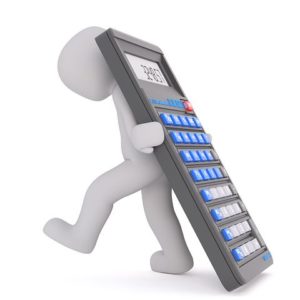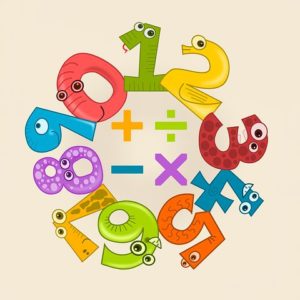 In another life, I was a district math consultant. In my first month in the job, I received a call from an elementary school principal, inviting me to a parent council meeting for 10-15 minutes to talk about the new curriculum.
In another life, I was a district math consultant. In my first month in the job, I received a call from an elementary school principal, inviting me to a parent council meeting for 10-15 minutes to talk about the new curriculum.
I asked, “Would it be possible to have an hour, or an hour and a half, so we can do some math together?” The principal checked with his parent council and we scheduled a math night for parents at the school library.
To make a long story short, word got around and I started receiving invitations for parent math nights across the district. Sometimes the turnout was 20 parents. Sometimes it was over 200, with tables and chairs filling a gym. It was one of my favourite things to do!
I quickly noticed 2 things:
- Many of parents feared or even hated math.
- Quite a few commented on their children’s basic computation skills.
To get parents thinking about what basic computation skills might be, I did 3 warm-up activities with them:
1. Counting money
 I brought some bills and coins and I laid them out on a table: a collection of twenties, tens, fives and coins.
I brought some bills and coins and I laid them out on a table: a collection of twenties, tens, fives and coins.
I invited a parent volunteer to count the money. I asked them to touch the bills and coins as they counted.
Then I invited a second parent volunteer to check the first answer.
How would you count the bills and coins?
If you are a typical person (like the parents at the Math Nights), you would first count the $20 bills, then the $10 bills, then the $5 bills, and so on … finally counting the coins, with the smallest last.
I said: “Great! We agree on the answer.”
And I asked: “How many of you would add money this way?” Most parents raised their hands.
“But we have a problem,” I added. “The math is backwards.”
Most parents (if not all) learned in school to add numbers from the right, starting with the smallest place value.
But when asked to add bills and coins, their minds naturally added from the left, starting with the greatest place value.
This is interesting, isn’t it?
Parents noticed:
- The calculation methods they learned in school are not always (actually, not often) the ones they naturally use in everyday situations.
2. All you need is a calculator (?)
 Next, I pointed out that calculators were abundant and inexpensive. (Today, every cellphone and tablet has a built-in calculator. Or just type the question in your browser’s address bar and it will find you the answer.)
Next, I pointed out that calculators were abundant and inexpensive. (Today, every cellphone and tablet has a built-in calculator. Or just type the question in your browser’s address bar and it will find you the answer.)
So I asked parents: “What do you think about not teaching children how to add, subtract, multiply and divide and just let them use a calculator?”
Their answer was that this would not be a good idea.
They explained that kids need to understand the math. With the calculator, they just push buttons.
So, I handed out calculators and asked them to solve 12 x 25.
I added, “But there’s a catch: you’re not allowed to use the #2 key. No cheating by doing this in your head. You have to get the answer using the calculator.”
Here are 3 of the calculator methods parents used.
- 3x4x5x5 (multiply the factors of the numbers)
- 6×50 (half the fist number, double the second one)
- 6x5x5 + 6x5x5 (a combination of the two methods above)
Can you think of a different method?
Parents noticed:
- They wanted their children to understand.
- A calculator can be a tool to think-with.
3. On paper & in your head
 Last, I presented parents with the problem, 16 x 24.
Last, I presented parents with the problem, 16 x 24.
I asked 2 parents at each table to solve this using pencil and paper and the rest to solve it in their heads.
Before you read further, try calculating 16 x 24 in your head.
I asked the parents who used paper and pencil to share the methods they used. They hesitated to volunteer. When a few did share, we noticed that they used the same method.
When asked to explain the paper-and-pencil method, they had a very difficult time. They could describe how, but could not explain why. For example, “Why did you indent the second row?” Some parents became frustrated and said: “It’s just a rule!”
The atmosphere changed when I asked parents to share the mental methods they used to solve the same problem. There was a palpable energy in the room. Parents were eager to share their personal solutions. They praised others who came up with different methods. They expressed delight at methods that surprised them.
Here are some of the mental methods parents shared:
- They multiplied 10 x 24, 6 x 20 and 6 x 4, and then added the three products.
- Some multiplied 20 x 16 and then 4 x 16.
- Some multiplied 16 x 25 and then subtracted the extra 16.
- Some multiplied 4 x 4 x 4 x 6.
- In some rare cases, parents used algebraic structures:
- 16 x 24 became (20–4)(20+4) = 400 + 80– 80 – 16
- or, more simply, (20–4)(20+4) = 400 – 16.
Parents noticed:
- When using a mental method, they understood what they were doing and could easily explain it to others.
- The paper-and-pencil method was more like using a calculator: pushing buttons to get an answer without much understanding.
Basic computation skills?
I’m old enough to know that I don’t have all the answers.
I do spend numerous days each year in elementary school classrooms, working with students and teachers. Here’s my opinion:
[bctt tweet=”Children need practice with a wide variety of basic computation skills.” username=”georgegadanidis”]
Some basic computation skills:
- Paper-and-pencil computation.
- Mental computation, with ability to think flexibly, creatively and playfully about numbers and operations.
- Solving number-based puzzles with and without tools (like calculators, concrete materials, games, coding, etc).
- Making sense of numbers and operations in big idea contexts, such as the one below from Grades 1-2 classrooms.
The lyrics in this music video come from parent comments, after children shared their learning at home. From a project supported by KNAER.
